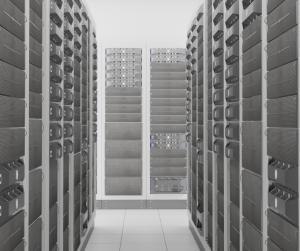In a rapidly evolving digital landscape where data is the new currency, the race to future-proof datacenters has been nothing short of exhilarating. The relentless pursuit of innovation has paved the way for a revolution in how we store, manage, and harness the power of data. Enter a realm where cutting-edge technologies converge to sculpt the datacenters of tomorrow, ones that not only meet current demands but also transcend them to anticipate the needs of the future.
Imagine a world where datacenters are not just hubs of information storage but dynamic entities that adapt, evolve, and predict the ever-changing data landscape. From AI-driven predictive analytics to quantum computing, the horizon of possibilities seems boundless. As the data deluge intensifies, organizations are compelled to rethink their datacenter strategies to stay ahead of the curve. This blog post delves into the realm of game-changing innovations that are reshaping the very foundation of datacenters, ensuring they remain resilient, efficient, and primed for the challenges that lie ahead. Step into a realm where the future of datacenters is not just a concept but a tangible reality, where innovation isn’t a choice but a necessity.
Artificial Intelligence in Datacenter Management
Artificial Intelligence (AI) has emerged as a game-changer in the realm of datacenter management. With its ability to analyze vast amounts of data and make intelligent decisions, AI is revolutionizing the way datacenters are operated and maintained. By leveraging machine learning algorithms, AI systems can optimize resource allocation, predict potential issues, and automate routine tasks.
One of the key applications of AI in datacenter management is predictive analytics. By analyzing historical data and identifying patterns, AI algorithms can forecast future demand and capacity requirements. This enables datacenter operators to proactively allocate resources and prevent potential bottlenecks. Additionally, AI-powered systems can detect anomalies in real-time, allowing for immediate remediation before they escalate into critical issues.
Another area where AI is making significant strides is in energy efficiency. Datacenters consume massive amounts of energy, and optimizing power usage is crucial for sustainability and cost-effectiveness. AI algorithms can analyze power consumption patterns, identify areas of inefficiency, and suggest optimizations such as server consolidation or workload redistribution. By continuously monitoring and adjusting power usage based on real-time demand, AI-driven systems can significantly reduce energy wastage.
Hyperconvergence: Streamlining Datacenter Infrastructure
Hyperconvergence is a revolutionary approach to datacenter infrastructure that combines storage, compute, networking, and virtualization into a single integrated system. This convergence eliminates the need for separate hardware components and simplifies management while improving scalability and performance.
Traditionally, datacenters have relied on complex architectures with separate storage arrays, servers, switches, and hypervisors. Managing these disparate components was a challenging task that often led to inefficiencies and increased complexity. Hyperconverged infrastructure (HCI) streamlines this process by consolidating all these elements into a unified platform.
By integrating storage and compute resources, HCI enables datacenters to scale more efficiently. Adding new nodes to the cluster is a straightforward process, and resources can be dynamically allocated based on demand. This flexibility allows datacenters to adapt quickly to changing workloads and ensures optimal resource utilization.
Software-Defined Storage Solutions for Scalability
Software-defined storage (SDS) solutions are transforming the way datacenters handle storage requirements. Unlike traditional storage systems that rely on proprietary hardware, SDS decouples the storage software from the underlying hardware infrastructure. This abstraction layer enables greater flexibility, scalability, and cost-effectiveness.
With SDS, datacenter operators can pool together multiple storage devices and manage them as a single entity. This eliminates the need for manual configuration of individual devices and simplifies management tasks. Additionally, SDS allows for seamless scalability by adding or removing storage capacity without disrupting operations.
Another key advantage of SDS is its ability to leverage commodity hardware. By utilizing off-the-shelf components instead of specialized proprietary equipment, datacenters can significantly reduce costs without compromising performance or reliability. This makes SDS an attractive option for organizations looking to scale their storage infrastructure while keeping expenses in check.
Automation and Orchestration for Enhanced Efficiency
Datacenter automation and orchestration are essential components of future-proofing strategies. Automation involves replacing manual tasks with automated processes that can be executed with minimal human intervention. Orchestration refers to the coordination and management of these automated processes across various systems and applications.
By automating routine tasks such as provisioning virtual machines or deploying applications, datacenters can improve operational efficiency and reduce human errors. Automation also enables faster response times by eliminating bottlenecks caused by manual intervention. Additionally, automation frees up IT personnel from mundane tasks, allowing them to focus on more strategic initiatives.
Orchestration plays a crucial role in ensuring the seamless integration of various components within a datacenter ecosystem. It enables the coordination of workflows, resource allocation, and workload management across different systems and applications. This orchestration layer ensures that datacenter operations are optimized for performance, scalability, and reliability.
Datacenter Interconnectivity: Creating Seamless Networks
Datacenter interconnectivity is vital for creating a seamless network that can handle the growing demands of modern applications and services. As organizations adopt hybrid cloud architectures and distributed computing models, the need for robust interconnectivity between datacenters becomes paramount.
Interconnecting datacenters allows for workload mobility, disaster recovery capabilities, and improved application performance. By establishing high-speed connections between geographically dispersed datacenters, organizations can ensure low-latency communication and seamless failover in case of outages or disruptions.
Software-defined networking (SDN) technologies play a crucial role in enabling datacenter interconnectivity. SDN allows for centralized control and programmability of network infrastructure, making it easier to manage complex networks spanning multiple datacenters. With SDN, organizations can dynamically allocate bandwidth, prioritize traffic based on application requirements, and implement security policies consistently across the entire network.
In conclusion, future-proofing datacenters requires embracing game-changing innovations that redefine how we store, manage, and operate these critical infrastructures. From AI-driven management systems to hyperconverged infrastructure and software-defined storage solutions, these innovations are revolutionizing the way we build and operate datacenters. Automation and orchestration enhance efficiency while interconnectivity ensures seamless communication between geographically dispersed facilities. By leveraging these innovations today, organizations can future-proof their datacenters for tomorrow’s challenges.

